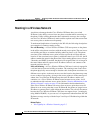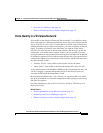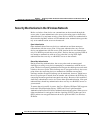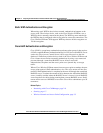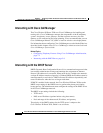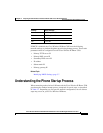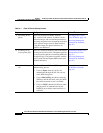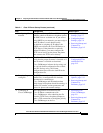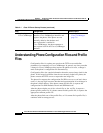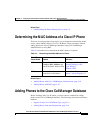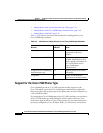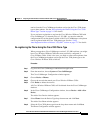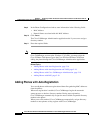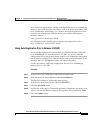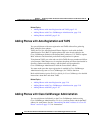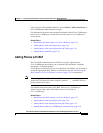
Chapter 2 Preparing to Install the Cisco Wireless IP Phone 7920 on Your Wireless Network
Understanding Phone Configuration Files and Profile Files
2-12
Cisco Wireless IP Phone 7920 Administration Guide for Cisco CallManager Release 3.3 or Later
OL-3930-02
Understanding Phone Configuration Files and Profile
Files
Configuration files for a phone are stored on the TFTP server and define
parameters for connecting to Cisco CallManager. In general, any time you make
a change in Cisco CallManager that requires the phone to be reset, a change is
made to the phone’s configuration file automatically.
Configuration files also contain information about the correct image load for the
phone. If this image load differs from the one currently loaded on a phone, the
phone contacts the TFTP server to request the new image file.
The phone first requests the configuration file SEPxxxxxxxxxxxx.cnf.xml, where
each xx is the two-digit lowercase hexadecimal representation of each integer in
the phone’s MAC address. If the phone cannot find this file, it requests the
configuration files XMLDefault.cnf.xml and SEPDefault.cnf.
After the phone obtains one of the .cnf.xml files or the .cnf file, it requests a
phone-specific profile file. If a phone cannot find this profile file, it requests the
appropriate common profile file.
After the phone finds one of the profile files, or if it cannot find a profile file, it
continues with its startup process.
8. Registering to
Cisco CallManager
If the phone was manually added to the
database, Cisco CallManager identifies and
registers the phone. If the phone was not
manually added to the database and
auto-registration is enabled in
Cisco CallManager, the phone attempts to
auto-register itself in the Cisco CallManager
database.
• Adding Users to
Cisco CallManager,
page 7-6
Table 2-1 Cisco IP Phone Startup Process (continued)
Step Configuration Related Topics



